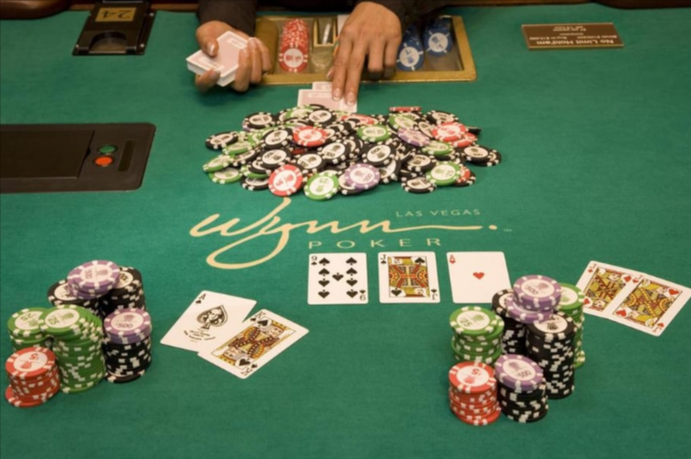As the 2025 World Series of Poker wraps up in Las Vegas, a surprise contender has stolen the spotlight: Montana. Yep — not Nevada, not California, but the rugged, sparsely populated Treasure State. According to fresh data from Gambling.com, Montana holds the crown as the most poker-obsessed state in the U.S., based on the number of poker rooms relative to population.
You wouldn’t expect it, but the numbers don’t lie. With just over a million residents and 24 licensed poker rooms, Montana outpaces even the glitz and glamour of Nevada — and by quite a margin. The rankings may raise eyebrows, but there’s no denying the numbers behind the shuffle.
Montana’s Poker Scene: Small Population, Big Passion
It’s not about flashing neon lights or mega-casinos here. Montana’s poker pulse beats strong in low-key venues across the state — from Billings to Missoula, and tucked-away taverns where the felt tables are well-loved and the community runs deep.
The report revealed that Montana has 2.11 poker rooms per 100,000 residents. That’s nearly double Nevada’s rate and more than twice the national average. Poker is practically part of the cultural fabric out here.
One-sentence paragraph? Sure. Montana takes its cards seriously.
And it’s not just quantity — the scene is fiercely local. With limits on maximum bets and modest table sizes, poker in Montana is less about high-rolling and more about grit, patience, and the occasional bluff over a Bud Light.

Nevada Still Dominates in Volume, But Not Per Capita
Let’s not bury Nevada too deep. Las Vegas is still home to some of the biggest poker rooms in the world, and the sheer scale of play is unmatched.
But per capita? Different story.
Nevada holds 1.13 poker rooms per 100,000 residents, with 37 poker venues spread out across a population of around 3.2 million. That puts it solidly in second place in the rankings.
This isn’t a knock on Vegas — it’s just math.
And even as WSOP brings global poker elites to the Strip, the data shows that other states are building strong regional scenes that don’t rely on mega-tourism or billion-dollar casinos.
The Top Five: Surprises Beyond the Big Names
Montana and Nevada may have grabbed the headlines, but the rest of the list offers a few curveballs too. Gambling.com’s findings are based on a mix of state gaming commission data and national business directories, adjusted for population.
Here’s a quick look at the top five:
| Rank | State | Poker Rooms | Population (est.) | Rooms per 100K |
|---|---|---|---|---|
| 1 | Montana | 24 | ~1.1 million | 2.11 |
| 2 | Nevada | 37 | ~3.2 million | 1.13 |
| 3 | New Hampshire | 14 | ~1.4 million | 0.99 |
| 4 | Colorado | 25 | ~5.9 million | 0.42 |
| 5 | Mississippi | 17 | ~2.9 million | 0.59 |
New Hampshire, in third, is something of a dark horse. With nearly one poker room per 100,000 people, it’s built a grassroots scene in places like Rochester and Salem. Legalised charitable gaming helped spark its poker growth.
Colorado and Mississippi round out the top five, driven by local gaming laws that favour smaller cardrooms outside of traditional casino models.
So Why Is Montana So Poker-Mad?
There’s no single answer. But ask any local, and they’ll give you a few clues.
For starters, the state’s unique gambling laws make it easier for bars and clubs to host low-stakes games. That means poker isn’t limited to big casinos — it’s in corner pubs, VFW halls, and community centres.
There’s also the social angle. Winters are long. Communities are tight-knit. Poker’s not just entertainment — it’s a gathering ritual. It beats watching reruns at home, that’s for sure.
And in many rural areas, it’s one of the few competitive social events around. You get the same faces each week, the same trash talk, the same low-stakes drama. It’s like church — just with chips and check-raises.
Poker Culture Shifts Away From Vegas-Only Glamour
What this ranking hints at, perhaps more than anything, is a broader shift in poker culture.
There was a time when all roads led to Vegas — and to some extent, they still do. But poker’s heart has started to beat in different corners of America.
Some players are tired of $500 buy-ins and five-figure swings. They want games where everyone knows your name, and the worst beat of the night is running out of Coors Light.
• Local poker scenes are gaining momentum
• Smaller venues offer more accessible gameplay
• States with relaxed licensing are seeing spikes in participation
There’s also the streaming effect. YouTube, Twitch, and poker podcasts have created a new generation of players who don’t need to relocate to Nevada to feel part of the game.
A bit like craft beer, the game has decentralised. And Montana’s scene, while modest in scale, is rich in character.
What This Means for the Broader U.S. Poker Landscape
Montana topping this list might feel like a fluke. It’s not.
The WSOP may get the media glare, but smaller poker rooms are thriving quietly. They’re filling up tables night after night, without the help of global sponsors or tourist footfall.
If anything, the data paints a picture of poker’s evolution — from televised celebrity hands to backroom grit and heartland loyalty.
As big-money poker gets flashier, local scenes are digging deeper. And if the numbers hold up, it’s Montana, not Nevada, where America’s poker soul is quietly being reshuffled.
Leave a Reply